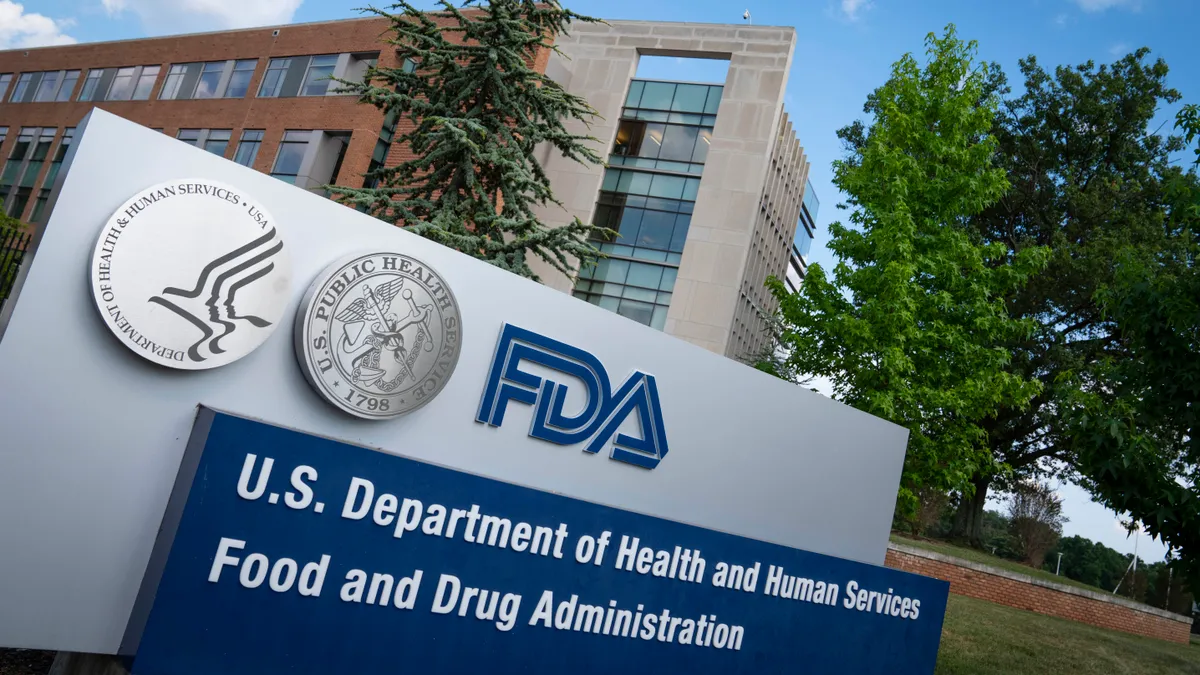Dive Brief:
- FDA's performance against its MDUFA IV premarket approval target looks set to slump, with the current figure for fiscal 2021 sitting almost 20% below the prior full-year low.
- As it stands, FDA has met its performance goal for 73% of applications. With 39 premarket approvals pending a decision, there is scope for that figure to change, but the shifts in the performance seen between the first quarter and mature results in earlier years suggest a dramatic improvement is unlikely.
- The premarket approval performance is part of a set of data points that indicate the stress FDA was under in fiscal 2021 during the COVID-19 pandemic due to its coronavirus-related workload. The agency is tracking below prior performance on its substantive interaction performance goal.
Dive Insight:
FDA has managed to meet the vast majority of its MDUFA IV commitments throughout the pandemic, but the impact of COVID-19 on the agency has been evident in its quarterly performance reports. The latest report, which covers FDA's actions through to the end of last year, reveals falls in performance from the historical lows seen in the prior period.
For filings made in fiscal 2018, 2019 and 2019, FDA is currently meeting its MDUFA IV premarket approval (PMA) performance goal between 91% and 100% of the time. The figure for fiscal 2021 is 73%, down two percentage points on the prior quarter.
FDA has reached MDUFA IV decisions on 29 of the 69 PMAs submitted in fiscal 2021. The agency met the goal for 27 of the decisions. That rate of on-time decisions is above the historical low for MDUFA IV, but is set to fall because eight of the 39 pending PMAs are already past the MDUFA IV decision goal. Whatever happens to the other pending PMAs, 2021 will represent a new performance low for MDUFA IV.
The struggle to maintain the standards of prior years is also evident in FDA's performance against the MDUFA IV substantive interaction (SI) goal. The SI step in the PMA process precedes a decision to either issue a major deficiency letter or proceed interactively toward a MDUFA IV decision.
FDA has missed the SI goal for seven filings from fiscal 2021, and has SI pending but already past the goal for a further eight applications. The agency only failed to meet the SI goal for six filings across the three previous years combined. The record rate of missed SI goals has resulted in a performance of 79%, well down on the prior MDUFA low of 96%. FDA's average days to SI are up on the previous years as well.
The agency closed out 2021 with 61 PMA originals pending, the most since 2011 despite the number of filings falling to its lowest level since 2014. FDA made some progress against the backlog early in fiscal 2022, closing out the first quarter with 57 pending PMA originals.
CDRH director Jeff Shuren in September warned the agency is facing challenges to "make good" on some of its MDUFA IV commitments, even as it comes out the other side of the COVID-19 crisis. The warning reflects workloads that are higher than those FDA expected when it negotiated the reauthorization, according to Shuren.
FDA, as part of its 2017 MDUFA IV commitments, agreed to tighter timelines to reach decisions for most medical device submissions in exchange for increased user fees and the introduction of a new user fee program for De Novo classification requests. In particular, the agency said it would reduce the average total time to decision for PMA applications and 510(k) submissions.










